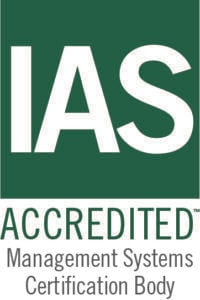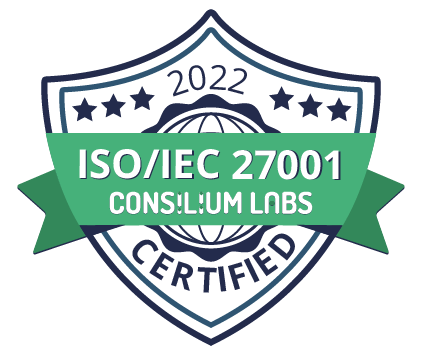We can all agree that accountability and transparency are goals for every organization. This is especially true when considering decision-making processes, as these two elements are crucial to ensure final decisions are defensible, accepted, and understood by key stakeholders. So why is it that many organizations often struggle to achieve accountability and transparency as they navigate the winding road to a strong decision?

The answer is actually quite simple.
Whether decisions are centered around project selection or allocation of scarce resources across projects, the ultimate outcomes are going to impact stakeholders in wildly different ways. Even in instances where communication is 100% crystal clear, it is natural that concerns about internal promotions, shifting project roles, and underlying political agendas can make it difficult to achieve buy-in from all the right people, and ensure the final decision is one everyone can get behind.
When stakeholders have different priorities, worries, and objectives (this happens more often than not), accountability and transparency techniques and methods can be your best friends. They work to ensure that the decision-making process remains robust, that all relevant voices were heard, and that key stakeholders are committed to executing the final decision. Strategic decision-making methods provide natural buffers against our all too human tendencies to overly focus on the dramatic portions of the decision process while neglecting the more mundane aspects behind decision analysis.
So, when we think about the role that accountability and transparency play in the strategic decision-making process, we’re not just talking about the ability to justify decisions to stakeholders or senior leadership. When implemented properly, they help you accomplish a whole lot more.
Transparency and accountability should serve as core pillars of your decision process, as they work to streamline communication, promote information sharing, and improve understanding among stakeholders. When you take a strategic approach to accountability and transparency, you guarantee that all decision priorities and alternatives receive adequate and equitable consideration.
With that in mind, let's look at some ways to ensure you're baking both of these crucial elements into your decision-making process in order to achieve better outcomes.
Strategic Decision-Making Requires Structure from the Get-Go
As you set off on your collaborative decision-making journey, working with a proven decision-making methodology greatly helps you stay on track and moving forward. At some point, your team will inevitably run into challenges that could slow down or bring the entire process to a grinding halt. In those moments, having an effective decision-making structure to fall back on lets your team visualize where the process has been bogged down, and gives you paths to navigate around the impasse.
Do your homework, and choose a decision structure that gives you options to circumvent common decision-making pitfalls. A good decision structure will encourage your team to converse and collaborate by using techniques to reach a consensus on areas of disagreement. Additionally, it will give you the tools to visualize where and when differences in opinion can be chalked up to disparate priorities, inadequate or different information sources, or the need to more creatively devise alternative solutions.
Implementing an effective decision structure illuminates these differences in a manner that promotes conversation, understanding, and consensus. It will save valuable time and resources, as teams can see exactly where in the decision process they can spend more or less energy. Teams can stop wasting time on long meetings where they are discussing variables that will not impact outcomes.
Don’t Overlook Documentation to Back Up Decisions
Your team could be firing on all cylinders and propose an above-and-beyond decision, but if you don’t have the documentation to back up how you got there, a politically charged challenge could cause the process to have been for nothing. Proper documentation is critical when you need to prove or demonstrate that transparency and accountability have been baked into your strategic decision-making process. When you can fall back on specific documents or notes that back up your assertions, you can feel confident in justifying your final decision and formulating a bullet-proof business case. Not only does documentation provide decision defensibility, it also speeds up future decision cycles, and permits quick iterations when new stakeholders or information are introduced.
Ideally, you should be able to log all conversations surrounding the decision, in addition to keeping records of opinions and inputs provided by relevant stakeholders. Having this information centralized on one platform further facilitates the documentation process and allows you to find the records you’re looking for with much greater ease.
Think of compiling documentation throughout the strategic decision-making process as leaving behind a breadcrumb trail. If you need to go back and consider where things went off the rails or how you ultimately came to a decision, you can easily retrace your steps and lean on your documentation for assistance.
Ensure All Voices Are Heard
What makes an organization successful? In a survey that gathered insights from 1,200 respondents, McKinsey found that when decisions were being made at the right level and by the right people, they were 6.8x more likely to be part of a winning company. Evidently, organizational success is driven by ensuring the decision-making process is being guided by all relevant stakeholders.
To avoid having to backtrack and consider whether alternative decisions were overlooked, take the time from the onset of the decision-making process to identify who the key stakeholders are. Consider anyone that will be affected by the proposed decision, even if it’s on a relatively small scale. As you think about progressing to the next stage of the decision-making journey, ensure you’ve given all stakeholders the opportunity to voice their opinion before moving forward.
Decisions that are pushed through by one assertive individual will never end well. A collaborative decision yields the best results, so ensure you’re giving everyone the platform to collaborate, communicate, and share their ideas in order to reach a strong decision.
Guarantee Defensibility with Every Decision You Make
To summarize, there are three key pillars to keep in mind as you consider adopting a decision process that lets you bake accountability and transparency into your decision-making process:
- Start from a proven decision-making structure that promotes information exchange and keeps processes on track, organized and efficient
- Give all relevant stakeholders the ability to voice their opinions at every stage of the decision-making process to ensure better outcomes and avoid potential obstacles down the line
- Seek decision processes that document conversations, insights, and priorities surrounding the decision-making process, and ideally, have them stored in a centralized location that can be used for future iterations
If you’ve been struggling to feel confident in your ability to justify your decision to department heads and senior leadership, it’s time to put those days behind you. Keeping accountability and transparency top-of-mind during the strategic decision-making process will ensure your final decision is a collective one backed by thorough documentation and collaborative insights.











